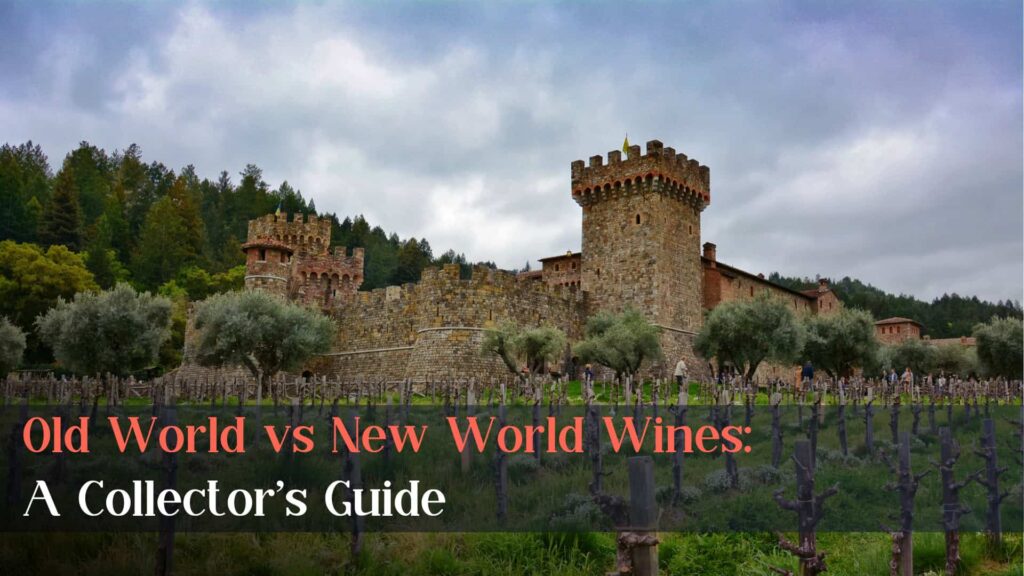Common Wine Grape Varieties: A Guide for Collectors and Enthusiasts
As fine wine collectors and enthusiasts, understanding the characteristics of common wine grape varieties is crucial for making informed decisions about your collection. In this comprehensive guide, we’ll explore some of the most popular red and white wine grapes, their history, typical flavors, and the regions where they thrive.
Table of Contents
Common Red Wine Grapes
Red wine grapes are known for their rich, complex flavors and ability to age gracefully. The skins of these grapes contain compounds called tannins and anthocyanins, which contribute to the wine’s structure, color, and aging potential. Red wines can range from light and fruity to bold and robust, offering a wide spectrum of flavors and styles to explore.
These grapes form the backbone of many famous wine blends, such as the Bordeaux blend (typically Cabernet Sauvignon, Merlot, and Cabernet Franc) and the GSM blend of the Rhône Valley (Grenache, Syrah, and Mourvèdre). They’re also often used as single-varietal wines, showcasing their individual characteristics and the influence of their terroir.
Let’s explore each of these remarkable red grape varieties in more detail:
1. Cabernet Sauvignon

Cabernet Sauvignon, often referred to as the “king of red wine grapes,” has a relatively young history. It was first created in the 17th century in southwestern France, likely as an accidental crossing between Cabernet Franc and Sauvignon Blanc. Today, it’s one of the most widely recognized and planted wine grapes globally. Notable brands include Château Lafite Rothschild from Bordeaux, Opus One from Napa Valley, and Sassicaia from Tuscany.
- Flavor Profile: Full-bodied with high tannins, featuring notes of black currant, cedar, and sometimes green bell pepper.
- Famous Regions: Bordeaux (France), Napa Valley (California), Tuscany (Italy)
2. Merlot
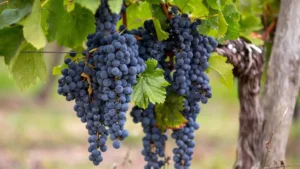
Merlot, whose name is thought to derive from the French word for blackbird, has been cultivated in Bordeaux since at least the 18th century. It gained worldwide popularity in the 1990s but faced a backlash after the 2004 film “Sideways.” Despite this, Merlot remains a beloved grape variety, known for its softness and approachability. Famous examples include Château Pétrus from Pomerol, Masseto from Tuscany, and Duckhorn Vineyards from Napa Valley.
- Flavor Profile: Medium to full-bodied with soft tannins, offering flavors of plum, cherry, and chocolate.
- Famous Regions: Bordeaux (France), Tuscany (Italy), Washington State (USA)
3. Pinot Noir
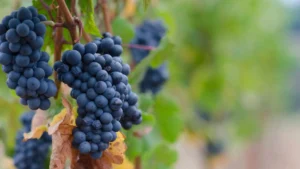
Pinot Noir is one of the oldest known grape varieties, with a history dating back to the 1st century AD in the Burgundy region of France. It’s notoriously difficult to grow, earning it the nickname “the heartbreak grape.” Despite its challenges, when done right, Pinot Noir produces some of the most sought-after wines in the world. Renowned producers include Domaine de la Romanée-Conti from Burgundy, Kosta Browne from California, and Felton Road from New Zealand.
- Flavor Profile: Light to medium-bodied with low tannins, known for its red fruit flavors (strawberry, cherry) and earthy undertones.
- Famous Regions: Burgundy (France), Oregon (USA), Central Otago (New Zealand)
4. Syrah/Shiraz
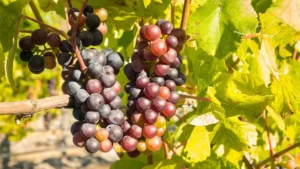
Syrah, known as Shiraz in Australia, has its origins in the Rhône region of France. DNA profiling has shown it to be a cross between two obscure varieties from southeastern France. It gained international recognition in the 1990s, particularly due to the bold, fruity styles coming out of Australia. Notable producers include E. Guigal from the Rhône Valley, Penfolds from Australia, and Sine Qua Non from California.
- Flavor Profile: Full-bodied with medium to high tannins, featuring dark fruit flavors, pepper, and sometimes smoky notes.
- Famous Regions: Rhône Valley (France), Barossa Valley (Australia)
5. Sangiovese
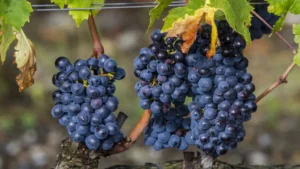
Sangiovese is Italy’s most widely planted grape variety and has been cultivated in central Italy for centuries. Its name is derived from the Latin “sanguis Jovis,” meaning “the blood of Jupiter.” It’s the primary grape in Chianti and the sole grape allowed in Brunello di Montalcino. Famous producers include Biondi Santi and Antinori in Tuscany, and Frescobaldi’s Luce della Vite.
- Flavor Profile: Medium-bodied with high acidity and tannins, offering flavors of cherry, plum, and herbs.
- Famous Regions: Tuscany (Italy), particularly in Chianti and Brunello di Montalcino
Common White Wine Grapes
White wine grapes offer a fascinating contrast to their red counterparts. While they may not have the bold tannins of red wines, white wines can be incredibly complex, with a wide range of flavors and aromas. From crisp and refreshing to rich and full-bodied, white wines offer something for every palate.
The white grape varieties we’ll discuss – Chardonnay, Sauvignon Blanc, Riesling, Pinot Grigio/Pinot Gris, and Chenin Blanc – represent some of the most versatile and widely planted white wine grapes in the world. These grapes are capable of producing a diverse array of wine styles, from bone-dry to lusciously sweet, and from light and unoaked to rich and barrel-fermented.
White wines are often praised for their ability to pair well with food, thanks to their generally higher acidity. They can also age beautifully, with varieties like Riesling and Chenin Blanc capable of evolving in the bottle for decades.
It’s worth noting that while these grapes are often used to produce single-varietal wines, they’re also important components in many famous blends. For example, Chardonnay and Pinot Noir are the primary grapes used in Champagne production, while Sauvignon Blanc and Sémillon form the classic white Bordeaux blend.
Now, let’s delve into each of these exceptional white grape varieties:
1. Chardonnay

Chardonnay, often called the “winemaker’s grape” due to its versatility, originated in the Burgundy region of France. It gained immense popularity in the 1980s, leading to widespread planting around the world. Chardonnay can produce a wide range of styles, from crisp and unoaked to rich and buttery. Renowned producers include Domaine Leflaive from Burgundy, Kistler from California, and Leeuwin Estate from Australia.
- Flavor Profile: Medium to full-bodied, with flavors ranging from apple and lemon to tropical fruits, often with buttery or oaky notes when aged in oak.
- Famous Regions: Burgundy (France), California (USA), Chablis (France)
2. Sauvignon Blanc
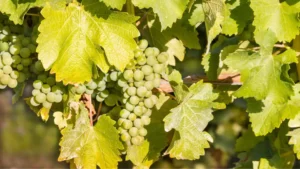
Sauvignon Blanc originated in the Loire Valley and Bordeaux regions of France. Its name comes from the French words “sauvage” (wild) and “blanc” (white), referring to the grape’s early origins as a wild vine. It gained international recognition in the late 20th century, particularly due to the distinctive style developed in New Zealand. Notable producers include Cloudy Bay from New Zealand, Didier Dagueneau from the Loire Valley, and Robert Mondavi from Napa Valley.
- Flavor Profile: Light to medium-bodied, known for its herbaceous character and high acidity, with flavors of green apple, grass, and sometimes tropical fruits.
- Famous Regions: Loire Valley (France), Marlborough (New Zealand), Bordeaux (France)
3. Riesling
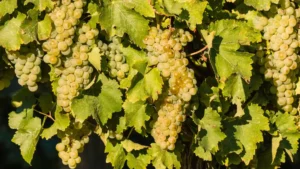
Riesling has a long and noble history, with the first documented mention dating back to 1435 in Germany. It’s considered one of the world’s greatest white wine grapes, capable of producing wines that can age for decades. Riesling is particularly noted for its ability to express terroir. Famous producers include Egon Müller and Dr. Loosen from Germany, F.E. Trimbach from Alsace, and Grosset from Australia.
- Flavor Profile: Light-bodied with high acidity, offering a range from bone-dry to very sweet, with flavors of apple, peach, and sometimes petrol notes in aged versions.
- Famous Regions: Mosel (Germany), Alsace (France), Clare Valley (Australia)
4. Pinot Grigio/Pinot Gris
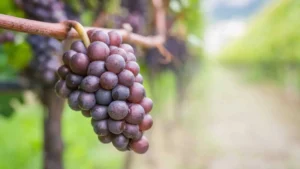
Pinot Grigio, known as Pinot Gris in France, is a color mutation of Pinot Noir. It has been cultivated in Burgundy and Alsace since the Middle Ages. In the late 20th century, the Italian style of Pinot Grigio became immensely popular, known for its light, crisp character. Notable producers include Trimbach from Alsace, Santa Margherita from Italy, and King Estate from Oregon.
- Flavor Profile: Light to medium-bodied, typically dry with flavors of pear, citrus, and sometimes a slight honeyed note.
- Famous Regions: Alsace (France), Italy, Oregon (USA)
5. Chenin Blanc

Chenin Blanc has been grown in the Loire Valley since the 9th century. It’s an incredibly versatile grape, capable of producing everything from bone-dry wines to lusciously sweet dessert wines. In the 20th century, it became widely planted in South Africa, where it’s known as Steen. Renowned producers include Huet from Vouvray, Ken Forrester from South Africa, and Chappellet from Napa Valley.
- Flavor Profile: Versatile grape that can produce wines from dry to sweet, with high acidity and flavors of apple, honey, and sometimes woolly or lanolin notes.
- Famous Regions: Loire Valley (France), South Africa
Conclusion
Understanding these common wine grape varieties is essential for any wine collector or enthusiast. Each grape variety offers unique flavors and characteristics, influenced by factors such as terroir, winemaking techniques, and aging processes. As you continue to explore and expand your wine collection, remember that GrtWines offers a curated selection of fine wines from these and other grape varieties, all backed by our innovative tokenization system for secure and transparent ownership.
Whether you’re drawn to the bold tannins of Cabernet Sauvignon, the elegant complexity of Pinot Noir, the crisp acidity of Sauvignon Blanc, or the versatility of Chardonnay, there’s a world of flavors to discover in the realm of fine wines. Happy collecting!


